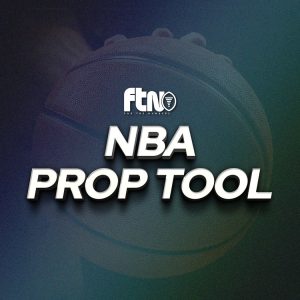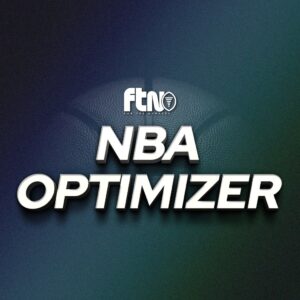
Week 15 of the NFL season comes to a close Tuesday with another two-game DFS slate on the docket. Washington and Philadelphia square off as each team clings to faint Wild Card aspirations as they fight for the third and final spot. A win for either team here would pull them up to 7-7 with a shot to sneak in with a strong stretch run. Theoretically, Seattle is in the same boat, but at 5-8, they need a lot of help to hop the four teams in front of them.
Tuesday’s DFS lineup building will be interesting with various paths to take, especially at the running back position. Well, let’s get to it.

Washington Football Team vs. Philadelphia Eagles
PHI -6.5, O/U 42
Pace and playcalling
Despite their run-heavy nature, the Eagles will still push the pace as they are third in neutral pace. Washington has slowed as the season has progressed, now sitting at 21st in neutral situations. Both teams rely on their rushing attacks heavily, ranking third (PHI, 48.5%) and ninth (WAS, 46.9%) in neutral rushing rates.
Injuries
Washington
- Cornelius Lucas (OL) – Reserve/COVID-19 List
- Sammis Reyes (TE) – Reserve/COVID-19 List
- Temarrick Hemingway (TE) – Reserve/COVID-19 List
- Kyle Allen (QB) – Reserve/COVID-19 List
- David Mayo (LB) – Reserve/COVID-19 List
- Milo Eifler (LB) – Reserve/COVID-19 List
- Troy Apke (CB) – Reserve/COVID-19 List
- Darrick Forrest (S) – Reserve/COVID-19 List
- Kendall Fuller (CB) – Reserve/COVID-19 List
- Tyler Larsen (OL) – Reserve/COVID-19 List
- Brandon Scherff (OL) – Reserve/COVID-19 List
- Taylor Heinicke (QB) – Reserve/COVID-19 List
- Kamren Curl (S) – Reserve/COVID-19 List
- J.D. McKissic (RB) – OUT
- Curtis Samuel (WR) – OUT
- Ricky Seals-Jones – Questionable
Philadelphia
- Landon Dickerson (OL) – Reserve/COVID-19 List
- Andre Dillard (OL) – Reserve/COVID-19 List
Football Team
At the time of writing this, we have no clue who will be the starting quarterback for this game. Taylor Heinicke and Kyle Allen are out (COVID-19), which leaves Garrett Gilbert, Kyle Shurmur or Jordan Ta’amu possibly starting. This is an easy fade even if Heinicke or Allen can test out and play in this game. Washington has been skewing more run-heavy over the last few weeks to squeak out wins, and this presents another opportunity for them to do just that. Philadelphia hasn’t been a cake matchup for quarterbacks allowing only 6.9 yards per attempt (21st) and 3,112 passing yards (22nd). They are 12th in fantasy points per game allowed to the position, but much of this is due to giving up the seventh-most rushing touchdowns (four).

Antonio Gibson is primed for a flop lag game after ending up as the chalk last in Week 14 and busting miserably. Gibson fumbled, and his day was done after 12 touches totaling 41 yards and playing 68% of the snaps. With J.D McKissic out, Gibson should be the do-it-all back Tuesday. The Eagles have allowed 1,234 rushing yards (14th) and nine rushing touchdowns (12th). They were a team we targeted early in the season, but they have since toughened up down the stretch. Since Week 6, they are allowing the fifth-lowest explosive run rate and are ninth in red zone rushing defense (48% success allowed). Gibson can overcome what will likely be an inefficient day with raw volume. Over his previous four games, he was seeing 27.3 opportunities per game and turning them into 107.5 total yards. The Washington offensive line will be missing some pieces this week, but since Week 6, they have been dominant, ranking seventh in yards before contact per attempt (per FTN Data). Per FTN Data, 72.2% of Gibson’s runs have come on inside or outside zone run plays. The Eagles allow 4.0 yards per carry and 1.32 yards before contact per attempt against these concepts.
Depending on the quarterback in this week’s game, we could see a big downgrade for the pass game weapons here. The uncertainty of the signal-caller under center makes Terry McLaurin an interesting GPP option and leverage play off Gibson. McLaurin is 17th among wide receivers with a 25.3% target share and ninth in weighted opportunity. The worry for McLaurin is he’ll run about half of his routes against Darius Slay. Slay has been stellar this year, allowing a 57.1% catch rate and 55 passer rating. This leaves McLaurin as a leverage play or large field option only.
Weeks with DeAndre Carter seeing 55% snaps or higher
Looking at the rest of the pass game options for Washington, the one that sticks out the most is DeAndre Carter. In Weeks 5, 8, and 10-14, he played 55% of higher snaps and saw 14.7% of the targets with 23.1% of the team’s air yards. He’ll run about half of his routes against the best corner matchup on the board for Washington in Steven Nelson. Nelson allows a 69.6% catch rate and 115.5 passer rating this year.
Over the same span, Adam Humphries has an 11.1% target share running about 76% of his routes from the slot. With his 7.5-yard aDOT and two red-zone targets on the season, he’s a player that needs heavy volume to pay off, which isn’t likely to happen. He’ll match up with Avonte Maddox, who allows a 73% catch rate and 108.8 passer rating. If you want to take a shot on him in 1-2 lineups in a 20 max or above, I get it, but he’s a player that doesn’t make my single entry or three-max builds.
Week 14
| Player | Routes | Targets | Red zone targets |
| Ricky Seals-Jones | 17 | 4 | 0 |
| John Bates | 27 | 2 | 0 |
Last week, Ricky Seals-Jones ran fewer routes than John Bates, but he still out-targeted him. Seals-Jones was dealing with a hip issue last week, so it’s possible he was eased back in after sitting out Weeks 11-13 with the same injury. Seals-Jones is listed as questionable, but he may return to the near 100% snap role he saw in Weeks 4-8. In those games, he saw a 14.8% target share and eight red-zone targets. The Eagles have been the flow chart for tight ends all season. They are 31st in DVOA (per Football Outsiders), giving up the most receptions (88), receiving yards (874), and receiving touchdowns (11) to tight ends. If Seals-Jones is out (illness), then Bates vaults up the GPP ranks.
Eagles
Even at full strength, the Washington Football team has been a bottom-barrel unit against the pass. Washington ranking 27th in pass defense DVOA, allowing 3,507 passing yards (eighth-most), 7.4 yards per attempt (tenth), and the most passing touchdowns in the NFL (27). Since the Eagles changed offensive philosophies, Hurts has averaged only 21.8 pass attempts and 143.8 passing yards. Hurts has finished as a top 12 scoring quarterback in three of those five games because of his rushing equity (11.2 attempts per game, 66.8 rushing yards per game). Hurts doesn’t carry an injury designation into this game. He’s in play for the top quarterbacking option on the slate.
Week 11
| Player | Rushing attempts | Red-zone opportunities | Targets | Routes |
| Miles Sanders | 16 | 2 | 1 | 11 |
| Jordan Howard | 10 | 0 | 0 | 1 |
| Boston Scott | 6 | 1 | 2 | 15 |
Miles Sanders will lead the Philly backfield this week. In the only game Sanders, Jordan Howard and Boston Scott were all active, Sanders led on the early downs while eating into the passing game while seeing usage in the red zone. Washington has allowed 857 rushing yards to backs (31st). They are also top-nine in adjusted line yards, second-level yards and open-field yards allowed. Since Week 6, Washington is first in red zone rushing defense and 14th in explosive run rate allowed. If there is an offensive line to match strength with strength, it could be Philadelphia’s front five. Over the same stretch of games, they are ninth in non-quarterback yards before contact per attempt. Miles Sanders, Jordan Howard and Boston Scott have seen 83.6-88.3% of their runs on inside zone, outside zone and man/duo runs. The Football Team has allowed 3.8 yards per carry and 1.89 yards before contact per attempt. If picking out players to provide leverage off a popular Hurts, Sanders and Scott are my picks. Howard is fine in MME, but I would rather roster the two players from this backfield that will also run routes, thus giving them some outs as pass catchers. Howard is a touchdown-dependent early grinder in an abysmal matchup.
Since Week 8
The two primary passing-game options to consider are DeVonta Smith and Dallas Goedert. Since Week 8, Smith has a 23.6% target share (37.1% of the team’s air yards. He leads the team with a 27% first read share and 33% endzone target share. He’ll run about 89% of his routes against William Jackson and Darryl Roberts. Jackson is allowing a 64.2% catch rate and 120.8 passer rating. Roberts has been on the shelf this year, but last season he allowed a 71.4% catch rate and 109.5 passer rating (per PFF).
In the full games Dallas Goedert has played this season, he has a 20.4% target share with 20.7% of the team’s air yards. Goedert’s high equity target share is lower than Smith’s as he only has two end zone targets and a 14% red zone target share (third on the team). Washington is ninth in DVOA against the position, allowing 60 receptions (21st) and 687 receiving yards (16th). Hurts’ passing volume is a concern weekly, so in many instances, you’re probably just single stacking him.
If you are multi-entering and want to get weird with a cheap option and double-stack Hurts, Quez Watkins makes some sense. Watkins has a 13.4% target share, running 73% of his routes from the slot. Watkins stands out because of his usage in the red zone, where he’s tied for the team lead in target share (16%). He’ll see Danny Johnson in coverage, which has allowed a 69.2% catch rate and 140.1 passer rating in coverage.
DFS Plays
Core plays: Jalen Hurts, Antonio Gibson, DeAndre Carter, DeVonta Smith, Dallas Goedert, Miles Sanders
GPP only: Terry McLaurin, Ricky Seals-Jones, Boston Scott, Quez Watkins

Seattle Seahawks vs. Los Angeles Rams
LAR -7, O/U 46
Pace and playcalling
This game will be blistering in terms of pace and passing rate. Los Angeles is 10th and sixth in neutral pace and passing rate. The surprise here is that since Week 12, Seattle is 12th and 11th in pace and passing rate in neutral situations.
Injuries
Seattle
- Tyler Lockett (WR) – Reserve/COVID-19 List
- Alex Collins (RB) – Reserve/COVID-19 List
- Travis Homer (RB) – Reserve/COVID-19 List
- D.J. Reed (CB) – Reserve/COVID-19 List
- Brandon Shell (OL) – Reserve/COVID-19 List
- Kerry Hyder (DE) – Reserve/COVID-19 List
- Bryan Mone (DT) – Reserve/COVID-19 List
Los Angeles
- Rob Havenstein (OL) – Reserve/COVID-19 List
- Terrell Burgess (CB) – Reserve/COVID-19 List
- Jordan Fuller (S) – Reserve/COVID-19 List
- Tyler Higbee (TE) – Reserve/COVID-19 List
- JuJu Hughes (CB) – Reserve/COVID-19 List
- Ogbonnia Okoronkwo (LB) – Reserve/COVID-19 List
- Christian Rozeboom (LB) – Reserve/COVID-19 List
- Joseph Noteboom (OL) – Reserve/COVID-19 List
- Antoine Brooks (S) – Reserve/COVID-19 List
Seahawks

Russell Wilson’s last four outings against this defense have been rough. In that sample, he’s completing 57.1% of his passes, averaging 165.5 passing yards (5.9 yards per attempt) with a 4:4 passing touchdown to interception ratio. The Rams rank seventh in pass defense DVOA (per Football Outsiders), but their peripherals display a beatable pass defense. Wilson will be a distant third in popularity on this slate, which is why there’s consideration to be overweight on him. Los Angeles is 11th in adjusted completion rate and passing yards allowed. The area they have been stingy about is the passing touchdown department, allowing the second fewest (14). The Rams have also given up production on deep passing allowing the fifth-highest completion rate, but this continues to be underreported as they have faced the eighth-fewest deep attempts. Wilson will test them. He has the highest deep ball rate among quarterbacks with 100 or more attempts (17.8%). As scary as it is to say, Wilson has a path to a ceiling game.
On a two-game slate, you have to take stances. Fading the Seattle backfield is a viable one. Yes, Rashaad Penny is coming off a huge performance, but facing the Texans run defense and the Rams run defense are two very different things. Los Angeles is sixth and third in adjusted line yards and second-level yards allowed. They are 25th in rushing yards allowed to running backs. Since Week 7, they have the third-lowest explosive run rate allowed, but they are 31st in red zone rush defense. Despite Alex Collins and Travis Homer being out for this game, it’s possible Adrian Peterson could be active in this game as well as DeeJay Dallas. In Week 13, with both Penny and Peterson active, Peterson outcarried Penny inside the 20 5-4 while Travis Homer also saw two carries near the goal line. Penny’s role isn’t as set in stone as his breakout performance (with no Peterson) portrays. If Peterson is out, Penny would be a leverage play off Wilson or volume play.
At the time of writing this, it doesn’t look like Tyler Lockett will be activated for the game. If he is activated, I’ll be updating everyone in our Discord chat for FTNDaily. If you are a sub and you’re not taking advantage of this forum I highly encourage you to do so.
That leaves DK Metcalf as the leader of this passing attack. Jalen Ramsey has only shadowed once this season, so it’s unlikely he does so here. Metcalf leads the team in target share (25%), end-zone target share (38%), and red zone target share (36%). He’ll run about half of his routes against Darious Williams. Williams allows a 66% catch rate and 87.5 passer rating. Metcalf will be chalky if Lockett remains out, but he’s chalk worth eating and you can easily be different by stacking him with Wilson.
Since Week 12
The remaining starting receivers for Seattle are Freddie Swain and D’Wayne Eskridge. Eskridge profiles as the starter alongside Metcalf when they roll out only two receivers. Since Week 12, Swain has played 74% of his snaps from the slot, while Eskridge has been 50% outside and 50% slot. Since Week 12, Eskridge has edged out Swain in target share, air yards, and weighted opportunity by the slimmest of margins. If Swain is running inside against Jalen Ramsey, it’s easy to remove him from the player pool. Eskridge is in play for large field Wilson stacks. He’ll run about half of his routes against Donte Deayon, who allows a 67.6% catch rate and 101.2 passer rating.
| Player | Targets | Red zone targets | Routes |
| Gerald Everett | 7 | 4 | 48 |
| Will Dissly | 5 | 1 | 26 |
The Seahawks’ tight ends are difficult to trust in this game. This group has reverted to a two-way committee approach as Will Dissly has again eaten away at Gerald Everett’s targets and routes. Everett has held onto his red-zone role, so if you go down this path, Everett is the play. This is a tough matchup for tight ends, though, as the Rams are fifth in DVOA against the position, allowing 670 receiving yards (22nd) despite facing 102 tight end targets (13th).
Rams

Matthew Stafford is a core play against a pass-funnel Seattle defense. Seattle is 28th in pass defense DVOA (ninth vs. the run), allowing a 77.2% adjusted completion rate (seventh) and 7.2 yards per attempt (13th). Stafford has eight games this season as a top ten fantasy quarterback with three or more passing touchdowns. Stafford will be the most popular quarterback on this slate. He’s good chalk, though.
Thanks, Sean McVay. Los Angeles is another messy backfield to take shots on. Seattle isn’t an easy matchup on the ground. Seattle has allowed 1,279 rushing yards (12th) and 10 rushing scores (ninth) to backs, but the explosive plays will be lacking. Since Week 7, they are first in explosive run rate allowed. Per FTN Data, 92.7% of Michel’s runs (97.9%, Henderson) have been on inside zone, outside zone, and man/duo plays. Seattle has stifled these runs allowing only 3.6 yards per carry and 1.14 yards before contact per attempt. Seattle is 31st in DVOA against pass-catching running backs, allowing the most receptions (97) and receiving yards (903) in the NFL. There’s merit to getting exposure to both backs on this slate. Sony Michel has the upside to handle more volume if the team limits Henderson at all, coming off of COVID-19. Henderson could handle more routes in this game as he has (barely) been the more effective receiver. In a tough matchup on the ground, and without either back having a clear path to 20 touches on early downs, I’d rather invest in the passing-game usage, which leans to Henderson. If you force me to pick one of these players, I’ll side with Henderson.
Weeks 1-14 (per PFF)
| Player | Slot % | Yards per route run | Yards per reception |
| Darrell Henderson | 18 | 0.56 | 5.8 |
| Sony Michel | 10.1 | 0.50 | 5.1 |
Since Week 12
What do you want me to tell you to convince you to play Cooper Kupp at this point? He has been unstoppable this year, and matchups don’t matter. Kupp leads all wide receivers in target share (32%) and red-zone targets (30). He’ll run about 68% of his routes from the slot against Ugo Amadi. Amadi allows a 76% catch rate and 92.8 passer rating in coverage. He’s the top play by far on this slate out of any position.
Stafford’s other secondary stacking options are Van Jefferson, Odell Beckham and Kendall Blanton. With Stafford’s regularity for throwing three or more passing touchdowns this season, onslaughting the Rams’ passing attack is in play. Since Week 12, Jefferson has shifted roles and will run about 76% of his routes as the RWR or from the slot. This will match him up with Amadi or Sidney Jones. Jones is allowing a 51.3% catch rate and 94.8 passer rating. Since Week 12, Jefferson has had an 18.3% target share. He is tied with Kupp for fifth among wide receivers with 10 end-zone targets.
Over his last three games, Beckham has a 21% target share with 25% of the team’s air yards. He also leads the team in deep targets (five), sitting immediately ahead of Cooper Kupp and Van Jefferson, who are tied with four. He’ll run about half of his routes against Blessuan Austin, who has allowed every target (six) in his coverage to be secured this season with a 116.0 passer rating. During his career, Austin has been a corner to pick on (99 targets), allowing a 68.7% catch rate and 101.3 passer rating (per PFF).
With Tyler Higbee out, Kendall Blanton is a decent GPP option. In Week 14, he only drew a 10% target share, but he ran a route on 72.7% of Stafford’s dropbacks. He’s the pay-down option for tight end. Seattle is 31st in DVOA against the tight end position, allowing 792 receiving yards (eighth most) and eight receiving touchdowns (fourth-most).
DFS Plays
Core plays: DK Metcalf, Russell Wilson, Matthew Stafford, Cooper Kupp, Odell Beckham, Van Jefferson
GPP only: Kendall Blanton, D’Wayne Eskridge, Gerald Everett, Rashaad Penny, Darrell Henderson, Sony Michel
Core DFS Plays
(In order of preference)
Quarterback
Running Back
For GPPs:
- Rashaad Penny (if Peterson is out; if Peterson is active, he’s below LAR RBs)
- Darrell Henderson
- Sony Michel
- Boston Scott
Wide Receiver
For GPPs:
Tight End
For GPPs:
Defense/Special Teams
- Philadelphia, then Los Angeles, then Washington

















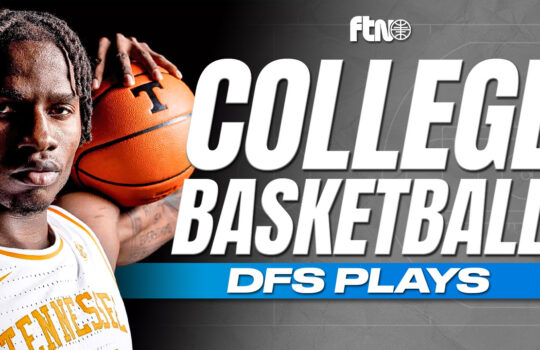
















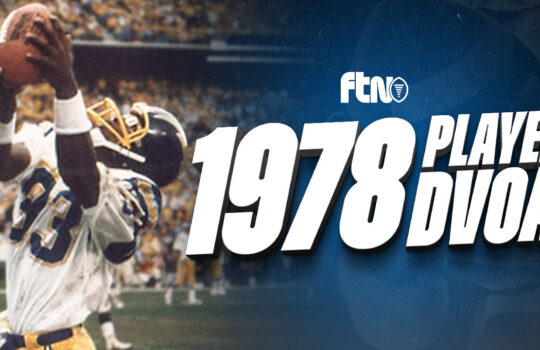

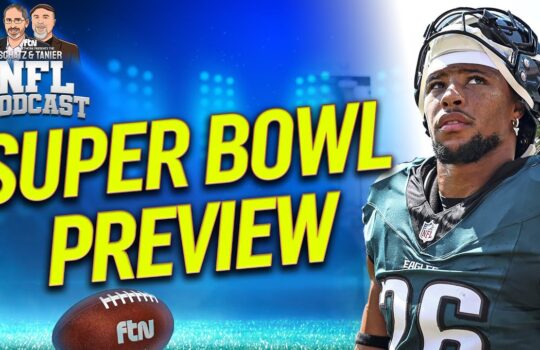

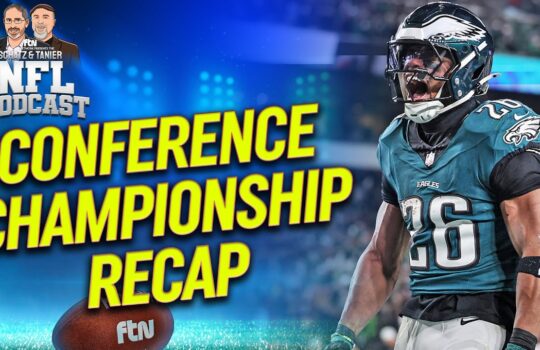









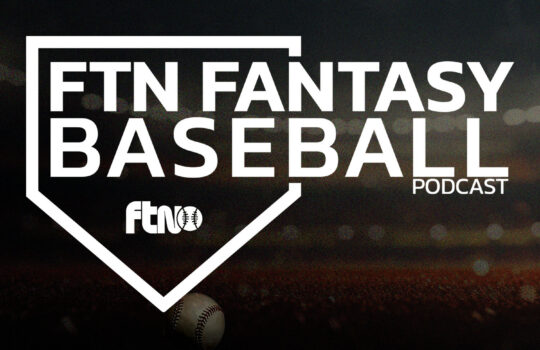
 New York Jets
New York Jets  New England Patriots
New England Patriots  Miami Dolphins
Miami Dolphins  Buffalo Bills
Buffalo Bills  Pittsburgh Steelers
Pittsburgh Steelers  Cleveland Browns
Cleveland Browns  Cincinnati Bengals
Cincinnati Bengals  Baltimore Ravens
Baltimore Ravens  Tennessee Titans
Tennessee Titans  Jacksonville Jaguars
Jacksonville Jaguars  Indianapolis Colts
Indianapolis Colts  Houston Texans
Houston Texans  Las Vegas Raiders
Las Vegas Raiders  Los Angeles Chargers
Los Angeles Chargers  Kansas City Chiefs
Kansas City Chiefs  Denver Broncos
Denver Broncos  Washington Commanders
Washington Commanders  Philadelphia Eagles
Philadelphia Eagles  New York Giants
New York Giants  Dallas Cowboys
Dallas Cowboys  Minnesota Vikings
Minnesota Vikings  Green Bay Packers
Green Bay Packers  Detroit Lions
Detroit Lions  Chicago Bears
Chicago Bears  Tampa Bay Buccaneers
Tampa Bay Buccaneers  New Orleans Saints
New Orleans Saints  Carolina Panthers
Carolina Panthers  Atlanta Falcons
Atlanta Falcons  San Francisco 49ers
San Francisco 49ers  Seattle Seahawks
Seattle Seahawks  Los Angeles Rams
Los Angeles Rams  Arizona Cardinals
Arizona Cardinals 

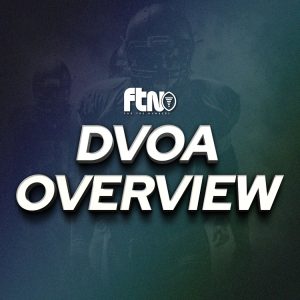
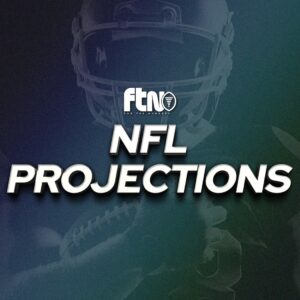



 Boston Celtics
Boston Celtics  Brooklyn Nets
Brooklyn Nets  Philadelphia 76ers
Philadelphia 76ers  New York Knicks
New York Knicks  Toronto Raptors
Toronto Raptors  Chicago Bulls
Chicago Bulls  Detroit Pistons
Detroit Pistons  Milwaukee Bucks
Milwaukee Bucks  Cleveland Cavaliers
Cleveland Cavaliers  Indiana Pacers
Indiana Pacers  Orlando Magic
Orlando Magic  Atlanta Hawks
Atlanta Hawks  Charlotte Hornets
Charlotte Hornets  Miami Heat
Miami Heat  Washington Wizards
Washington Wizards  Denver Nuggets
Denver Nuggets  Minnesota Timberwolves
Minnesota Timberwolves  Oklahoma City Thunder
Oklahoma City Thunder  Portland Trail Blazers
Portland Trail Blazers  Utah Jazz
Utah Jazz  LA Clippers
LA Clippers  Golden State Warriors
Golden State Warriors  Los Angeles Lakers
Los Angeles Lakers  Phoenix Suns
Phoenix Suns  Sacramento Kings
Sacramento Kings  Dallas Mavericks
Dallas Mavericks  Houston Rockets
Houston Rockets  Memphis Grizzlies
Memphis Grizzlies  New Orleans Pelicans
New Orleans Pelicans  San Antonio Spurs
San Antonio Spurs 

